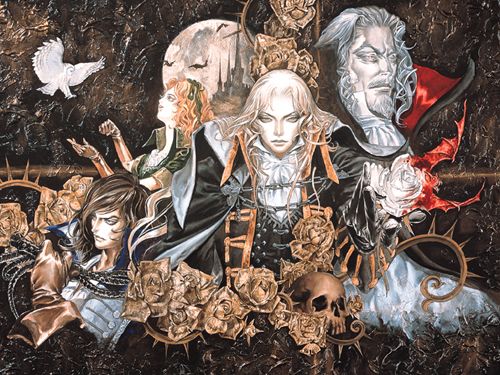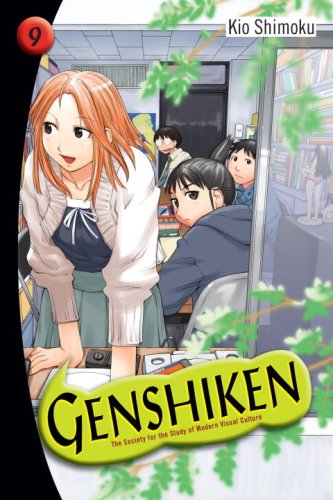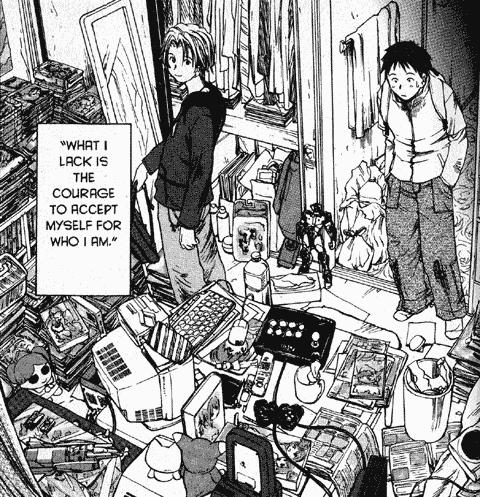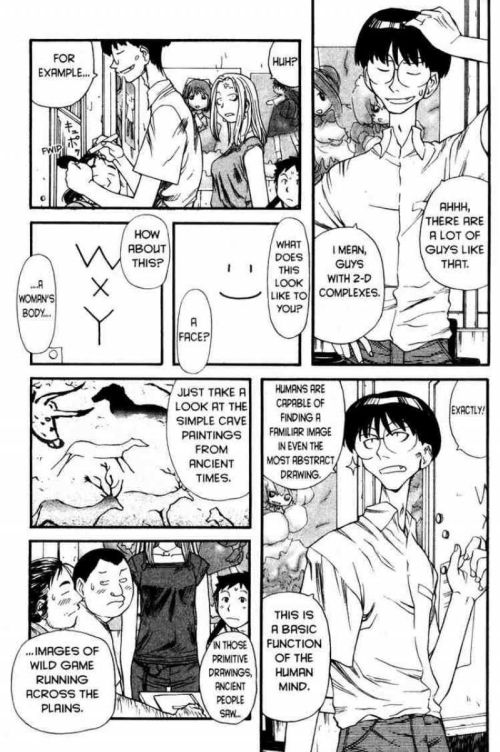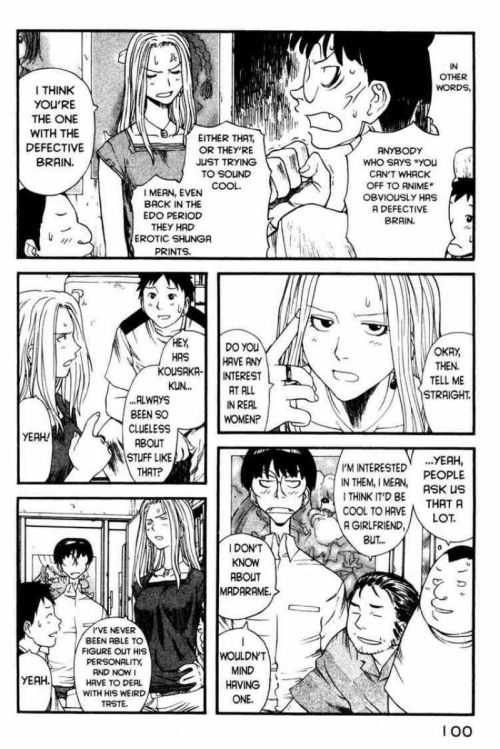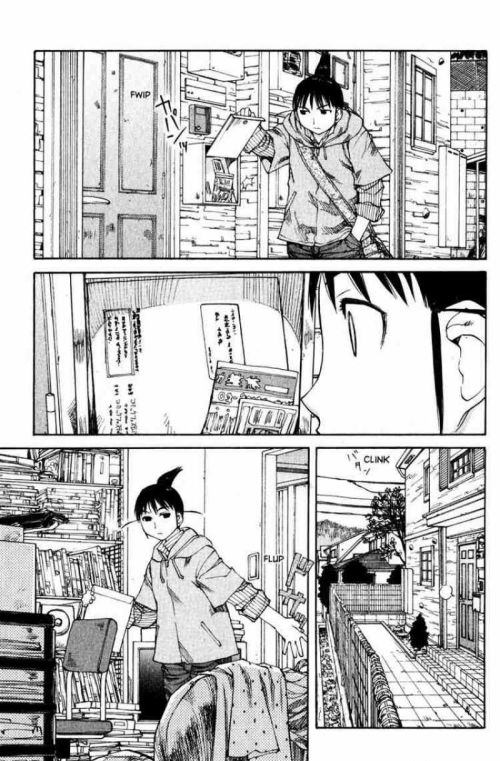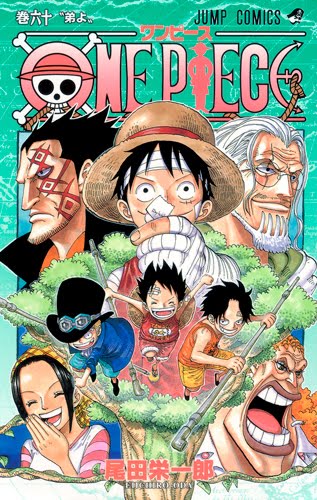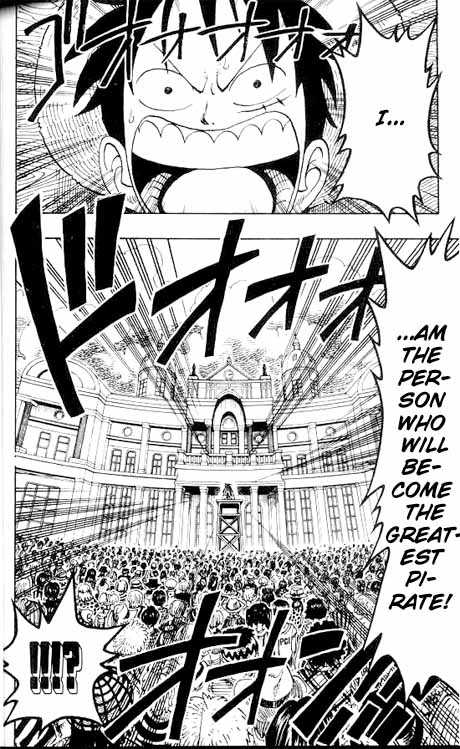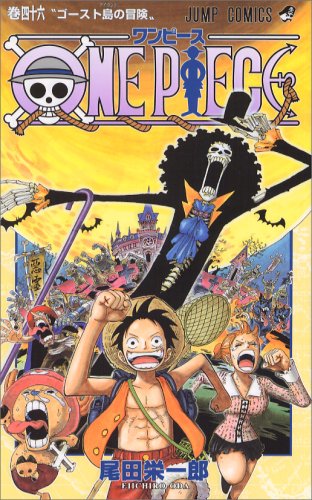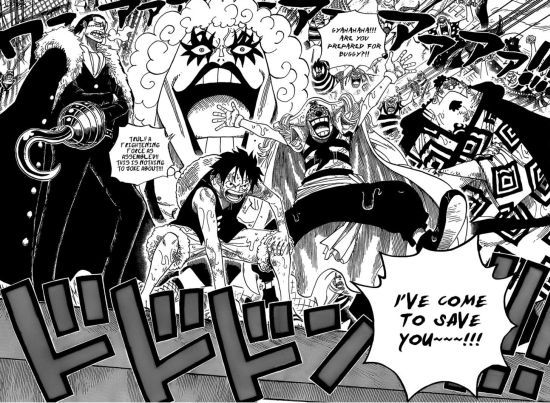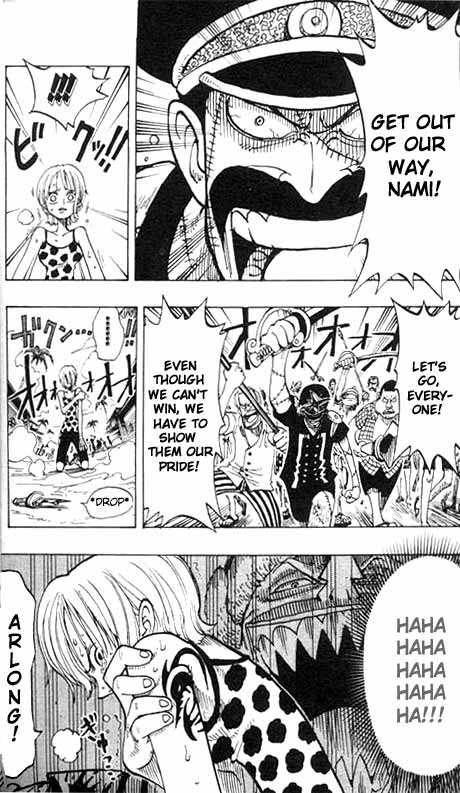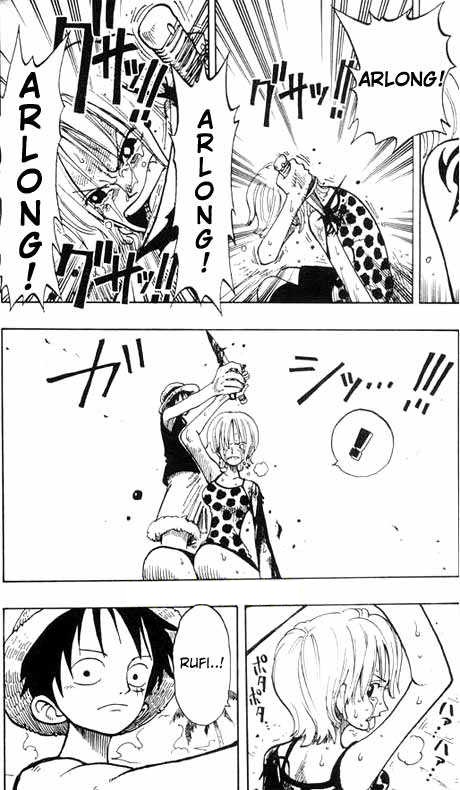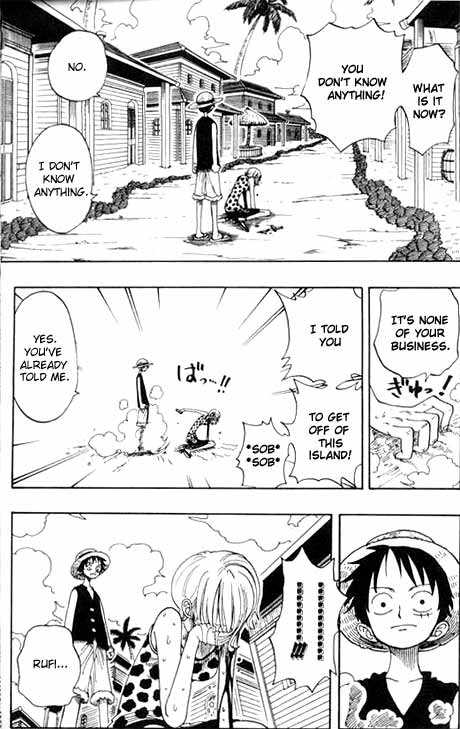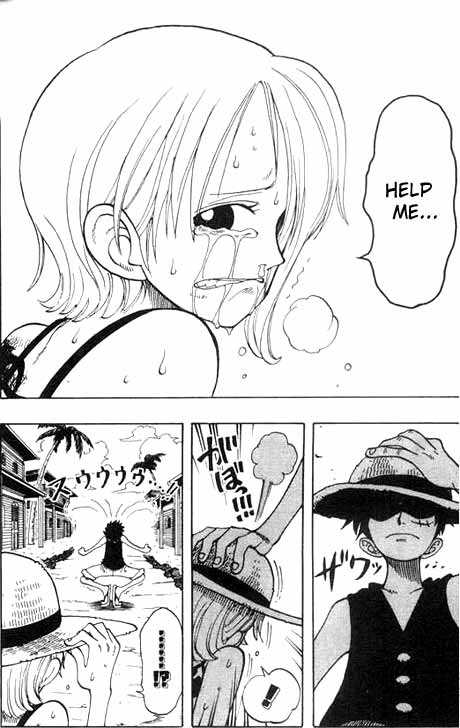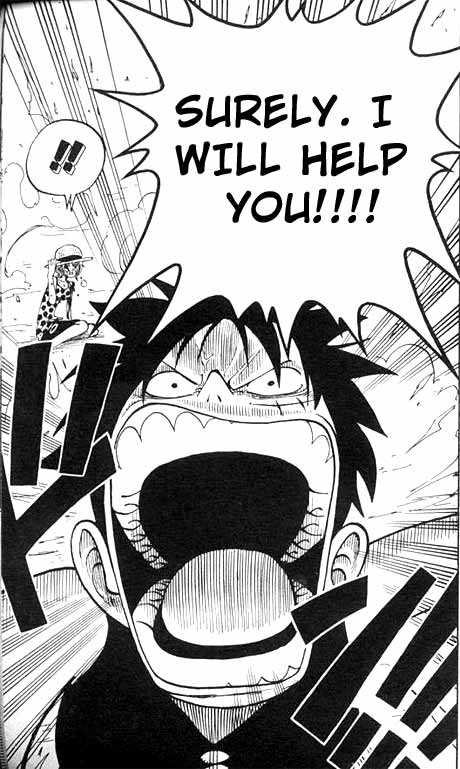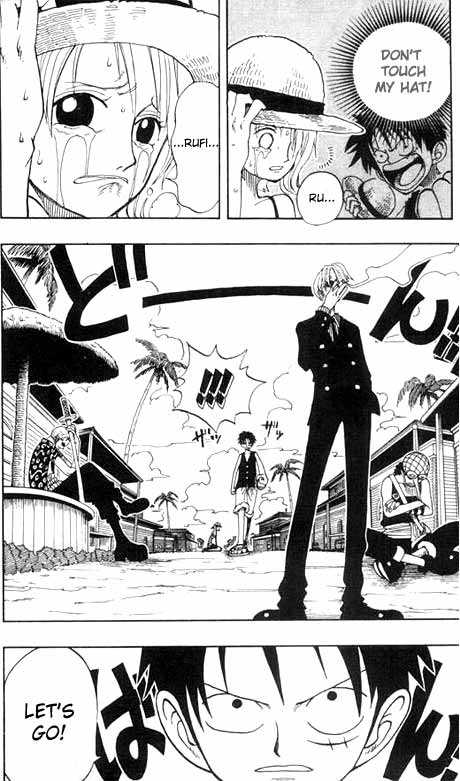This week I was going to recommend the manga Hikaru no Go, but then I had a change of heart. I’ve recommended a lot of manga (and a few books) in my “Recommendations”, but I now feel I should recommend things that aren’t necessarily book-related. It’s true I read a fair amount, but I also play video games and watch a lot of movies. There’s a number of works in the latter 2 categories that I would recommend without hesitation to anyone who’s interested, so why not include these in my recommendations list too? I guess HoG will have to wait a week or so.
I’ve recently revisited a game that I like very much, a game that’s been around long enough (in gaming years) to qualify as a “classic” game. Not a “retro” game by any stretch (that would require going back further than 20 years), but a game that’s been around 15 years, and yet still hold up reasonably well to a lot of its contemporaries. Not just those games in the same genre, but also those in the same series. Yes, this week I recommend Castlevania: Symphony of the Night.
Castlevania: Symphony of the Night (Konami)
(1997, Playstation)
SOTN is the, oh, I dunno, tenth in a series of games in the Castlevania series, I’m guessing. Most of the older games have been straight-forward action-platformers, none of which I particularly liked, largely because I wasn’t good at any of them. Heck, as a kid, I couldn’t even get past the first stage of the original Castlevania. So when SOTN scaled back the otherwise murderous difficulty level of the earlier Castlevanias, I was pretty darn grateful.
Plot
Castlevania is a series that’s been around almost as long as Super Mario Bros. has, and the plot has always been very simple. Every 100 years, Lord Dracula awakens and his demonic castle materialises out of nowhere, filled to the brim with monsters from every mythology ever. Before evil spreads across the land, someone has to stop the Lord of Darkness and put him to sleep for a while. Usually, this is the job of the Belmonts, a family of warriors who wield a vampire-vanquishing whip known as the “Vampire Killer”. However, in SOTN, you only get to play briefly as Richter Belmont, the current generation of vampire slayers (up until you beat the game anyway). You instead spend most of your time as Alucard, the damphir son of Dracula.
 Alucard has a beautiful character design. I feel compelled to mention that – so gorgeous and gothic are Ayami Kojima’s designs that an entire generation of fangirls descended on SOTN to sigh at the male characters. Anyway, Alucard gets involved when he hears that Richter Belmont has vanished, and that Castlevania has once again appeared – with no Belmont around to stop it. He decides to storm Castlevania himself, and find out what happened to Richter.
Alucard has a beautiful character design. I feel compelled to mention that – so gorgeous and gothic are Ayami Kojima’s designs that an entire generation of fangirls descended on SOTN to sigh at the male characters. Anyway, Alucard gets involved when he hears that Richter Belmont has vanished, and that Castlevania has once again appeared – with no Belmont around to stop it. He decides to storm Castlevania himself, and find out what happened to Richter.
Why I Recommend this Game
I love Metroidvania games. “Metroidvania” is a term used to describe a rather uncommon category of games – games that play like a cross between 2D-action/platformers and RPGs (role-playing games). Mind you, the original “Metroidvania” game was the Metroid series, again a series as old as Mario. However, while Metroid was reasonably popular, for some reason everyone rushed out to clone Super Mario Bros., and nobody wanted to copy Metroid. Why? All the Metroid games were great games (at least the 2D ones were), but even the original Castlevania resembled the Mario games more than the Metroid games. SOTN was the first Castlevania game to copy the Metroid formula, and since it was so successful, all the subsequent 2D Castlevania games just followed in its wake. Which can only be a good thing. More games for me to play.
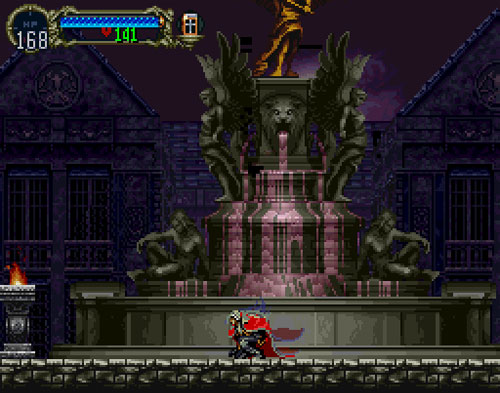 Part of the reason why I love Metroidvania games so much is the exploration element. Unlike a lot of people, I play games mostly to explore virtual worlds, and SOTN gives you the whole of Dracula’s castle to explore. The game was a lone 2D game in a sea of 3D games, and to make itself stand out, it pulled out all stops in the design and rendering department. Alucard is beautifully animated in fluid 2D, the likes of which I’ve not seen since. Each segment of the castle has its own theme and accompanying music, and it was simply lovely to backtrack your way through all the various spooky environments, meeting unique monsters along the way, and then killing them. There are loads of weapons, armour, items and familiars to collect; dozens of special powers and magic spells; an encyclopaedic array of monsters and bosses to destroy… and a massive map (with many hidden areas) to discover and traverse. For people who like to explore virtual environments, this is the best kind of gaming experience to have.
Part of the reason why I love Metroidvania games so much is the exploration element. Unlike a lot of people, I play games mostly to explore virtual worlds, and SOTN gives you the whole of Dracula’s castle to explore. The game was a lone 2D game in a sea of 3D games, and to make itself stand out, it pulled out all stops in the design and rendering department. Alucard is beautifully animated in fluid 2D, the likes of which I’ve not seen since. Each segment of the castle has its own theme and accompanying music, and it was simply lovely to backtrack your way through all the various spooky environments, meeting unique monsters along the way, and then killing them. There are loads of weapons, armour, items and familiars to collect; dozens of special powers and magic spells; an encyclopaedic array of monsters and bosses to destroy… and a massive map (with many hidden areas) to discover and traverse. For people who like to explore virtual environments, this is the best kind of gaming experience to have.
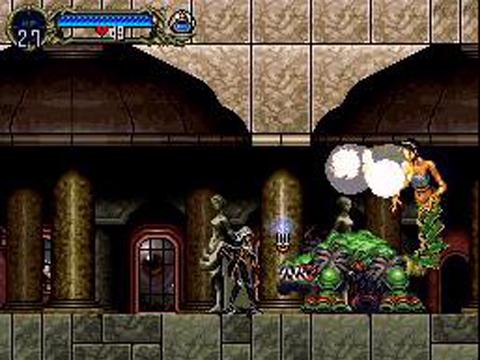 Interestingly, the biggest “problem” with this game is also the reason why I like it so much. SOTN is quite an easy game. Since it has an RPG leveling-up system where you increase your stats from gaining experience points, you can get really powerful, really fast. Combine that with some of the stronger weapons you collect, and the game becomes a total cakewalk only halfway through. Some people will complain about that, but any game that doesn’t get in the way of me doing my exploring gets a big thumbs up from, so curiously, I mark it up in this department. Besides, those who want a SOTN-style game and a decent challenge can look up the other games in the series.
Interestingly, the biggest “problem” with this game is also the reason why I like it so much. SOTN is quite an easy game. Since it has an RPG leveling-up system where you increase your stats from gaining experience points, you can get really powerful, really fast. Combine that with some of the stronger weapons you collect, and the game becomes a total cakewalk only halfway through. Some people will complain about that, but any game that doesn’t get in the way of me doing my exploring gets a big thumbs up from, so curiously, I mark it up in this department. Besides, those who want a SOTN-style game and a decent challenge can look up the other games in the series.
Other Castlevania Games (in the same style)
Castlevania, like a lot of game series, has evolved into the 3D realm, but not with much success. I haven’t played the 3D games (nor do I want to), but at least the 2D SOTN clones are of a reliably good quality. I’ve listed all the ones I’ve played here, so if you’re a huge fan of exploration-action games, you can check these out:
Circle of the M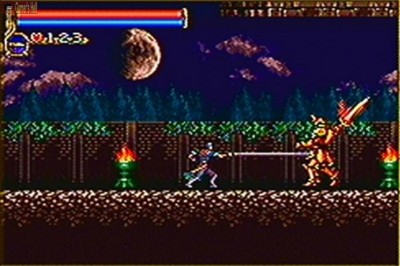 oon: This game was made for the Gameboy Advance, and given the limitations of the GBA, it’s decent. You play as Nathan Graves, something of an honorary Belmont, so he is armed with a whip. The controls aren’t great, but then it was made cheaply to capitalise off SOTN on the handheld market. It did well enough that they decided to make more of them on the GBA.
oon: This game was made for the Gameboy Advance, and given the limitations of the GBA, it’s decent. You play as Nathan Graves, something of an honorary Belmont, so he is armed with a whip. The controls aren’t great, but then it was made cheaply to capitalise off SOTN on the handheld market. It did well enough that they decided to make more of them on the GBA.
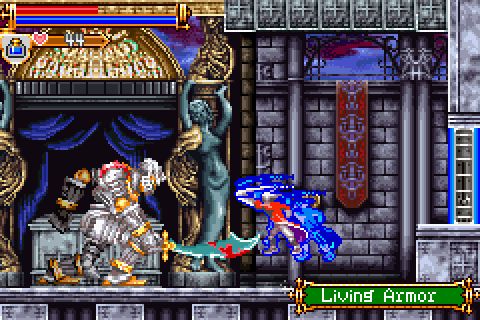 Harmony of Dissonance: Also made for the GBA, but this is a little strange. Graphics-wise, it is far more intricate and detailed than Circle of the Moon, but the colours are scary-garish, especially the reds. You play as Justin Belmont, armed with his whip and a glaring red coat that will stab you in the eyes. Justin’s sprite is also strange-looking… with what appears to be an oversized head. Rumour has it that this was originally made for a console like the Playstation, but scaled back to a GBA release. Hence the weird graphics.
Harmony of Dissonance: Also made for the GBA, but this is a little strange. Graphics-wise, it is far more intricate and detailed than Circle of the Moon, but the colours are scary-garish, especially the reds. You play as Justin Belmont, armed with his whip and a glaring red coat that will stab you in the eyes. Justin’s sprite is also strange-looking… with what appears to be an oversized head. Rumour has it that this was originally made for a console like the Playstation, but scaled back to a GBA release. Hence the weird graphics.
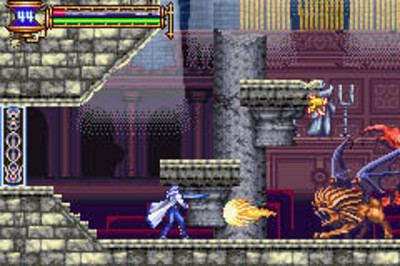 Aria of Sorrow: This is the GBA game to play, and is definitely the best game out of the GBA Castlevanias. It goes back to the inventory system of SOTN, and you play as Soma Cruz, an exchange student in Japan. The game has a soul-collecting mechanic, which allows you to copy the attacks of your enemies, making for a lot of variety. It also drives completion-ist types crazy, as they go back and forth in Dracula’s castle, trying to collect all the souls to make 100%.
Aria of Sorrow: This is the GBA game to play, and is definitely the best game out of the GBA Castlevanias. It goes back to the inventory system of SOTN, and you play as Soma Cruz, an exchange student in Japan. The game has a soul-collecting mechanic, which allows you to copy the attacks of your enemies, making for a lot of variety. It also drives completion-ist types crazy, as they go back and forth in Dracula’s castle, trying to collect all the souls to make 100%.
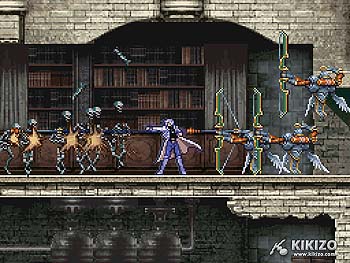 Dawn of Sorrow: This is the first Castlevania game on the Nintendo DS, and it is exactly like Aria of Sorrow but with much better graphics and a few new additions. It’s an improvement in every way on AoS, except for the designs, which all of a sudden has gone anime-ish. It’s a small complaint (done to appeal to a younger market), but I miss Ayami Kojima’s designs (though by then, they were getting a tad old).
Dawn of Sorrow: This is the first Castlevania game on the Nintendo DS, and it is exactly like Aria of Sorrow but with much better graphics and a few new additions. It’s an improvement in every way on AoS, except for the designs, which all of a sudden has gone anime-ish. It’s a small complaint (done to appeal to a younger market), but I miss Ayami Kojima’s designs (though by then, they were getting a tad old).
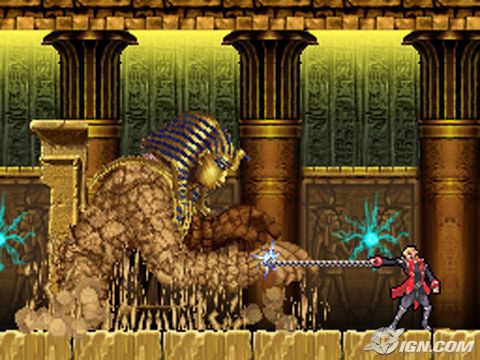 Portrait of Ruin: A solid follow-up on DoS, this DS game stars Jonathon Morris and Charlotte Aulin – two vampire slayers instead of the usual one. This game has some kind of buddy-system going, and due to the story having them go into portraits, a wide variety of terrains and areas are available. A welcome change from Dracula’s castle again, I guess. Unfortunately, I didn’t much enjoy this game, possibly because I wasn’t much taken in by the buddy system.
Portrait of Ruin: A solid follow-up on DoS, this DS game stars Jonathon Morris and Charlotte Aulin – two vampire slayers instead of the usual one. This game has some kind of buddy-system going, and due to the story having them go into portraits, a wide variety of terrains and areas are available. A welcome change from Dracula’s castle again, I guess. Unfortunately, I didn’t much enjoy this game, possibly because I wasn’t much taken in by the buddy system.
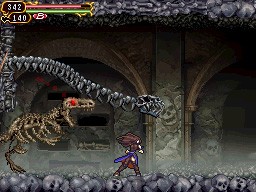 Order of Ecclesia: This DS game is possibly the hardest game in the whole series – you play as Shanoa (a girl! Not since the ret-conned Sonia Belmont!), a member of a secret cult sworn to destroy Dracula. You go through a vast array of environments before you end up in Dracula’s castle, so it’s more varied and feels longer than the other Castlevania games. It also has a soul-absorbing magic system where you can absorb enemy powers, but also at the cost of collecting no actual weapons. All-in-all, I like this game, but I’m too ham-handed to play it at anywhere near its best.
Order of Ecclesia: This DS game is possibly the hardest game in the whole series – you play as Shanoa (a girl! Not since the ret-conned Sonia Belmont!), a member of a secret cult sworn to destroy Dracula. You go through a vast array of environments before you end up in Dracula’s castle, so it’s more varied and feels longer than the other Castlevania games. It also has a soul-absorbing magic system where you can absorb enemy powers, but also at the cost of collecting no actual weapons. All-in-all, I like this game, but I’m too ham-handed to play it at anywhere near its best.

